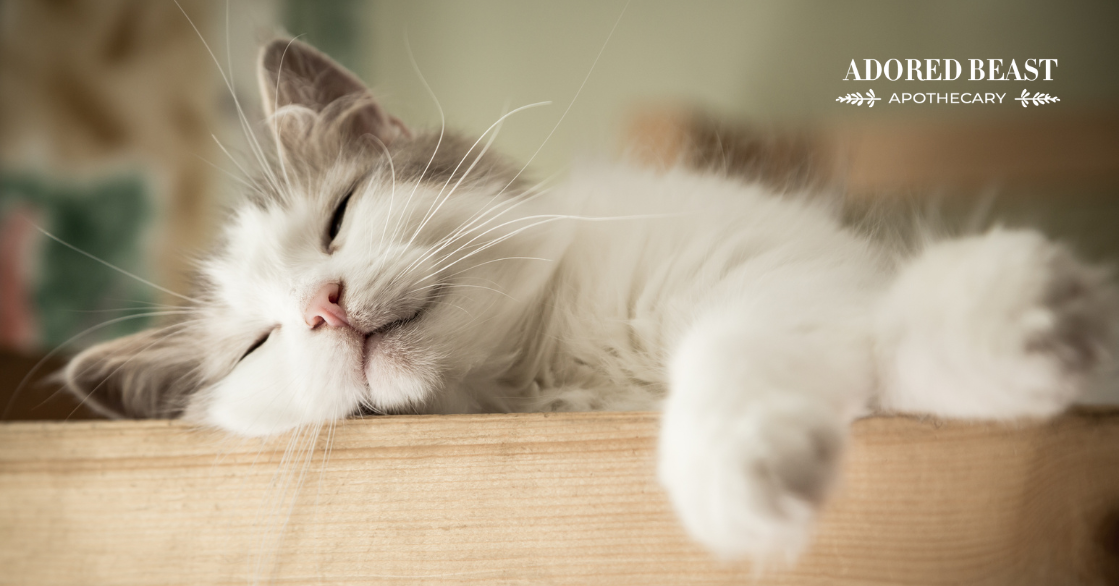Just like humans (and most other animals), cats can lose their vision. Sometimes, this happens as a result of injury or disease, or sometimes is just a result of the aging process. Other times, cats are born without vision. But in any of these cases, caring for a blind cat can be a deeply rewarding experience.
Cats are incredibly resilient animals, and with the right support, they can adapt to their vision loss and live full, happy lives. Here’s how you can help your blind cat navigate the world safely and comfortably.
Signs Your Cat May Be Losing Their Vision
Cats are masters at hiding their weaknesses, so it can be challenging to notice when they’re losing their vision. However, there are some signs to watch for:
- Bumping into things: If your cat starts bumping into furniture or walls, it could be a sign of impaired vision.
- Reluctance to jump or climb: A sudden hesitation to jump onto furniture or climb stairs might indicate vision problems.
- Disorientation: Your cat may seem confused in familiar surroundings, indicating difficulty seeing.
- Increased vocalization: Some blind cats may meow more often as they rely on their hearing to navigate and seek reassurance.
- Clinginess or withdrawal: Cats losing their vision may become more dependent on their owners or, conversely, withdraw and hide more frequently.
You know your cat best, so watch for any subtle changes in behaviour. If you notice any of these signs, a visit to your trusted veterinarian is a good idea. They can diagnose the issue and make sure something else isn’t going on.
Supporting a Blind Cat
Once you know your cat is blind or losing their vision, it’s important to make their environment as safe and comfortable as possible. Here are some tips:
1. Keep the Layout Consistent
- Avoid rearranging furniture: Your cat will memorize the layout of your home, so avoid moving furniture around. Keeping everything in the same place helps them feel secure and reduces the risk of accidents.
- Create landmarks: Use distinct textures or scents near important areas like food bowls, litter boxes, and sleeping spots. This will help your cat locate these areas more easily.
2. Safe Access to Essentials
- Litter box: Make sure the litter box is always in the same, easily accessible location. Consider using a box with low sides if your cat has difficulty stepping over high edges.
- Food and water: Place food and water bowls in the same spot every day. You might even consider using water fountains that make noise to help your cat locate the water.
3. Use Sound and Scent
- Interactive toys: Toys that make noise, such as those with bells or crinkly material, can help your cat engage in play and exercise despite their blindness.
- Talk to your cat: Let your cat know where you are by talking to them as you approach or leave a room. This helps them feel secure and reduces the chance of startling them.
4. Provide a Safe Space
- Create a sanctuary: Designate a quiet, safe space in your home where your cat can retreat when they need to rest or feel overwhelmed. Include a cozy bed, familiar toys, and perhaps a blanket with your scent for comfort.
5. Safety Precautions
- Block dangerous areas: Block off stairs, balconies, or any other areas where your cat could fall or get hurt. Baby gates work well for this purpose.
- Avoid sharp objects: Keep sharp or hazardous objects out of reach. Cats can still get curious and explore, so it’s important to ensure there are no dangers at their level.
[RELATED] There are similar ways to support your dog is they lose their sight.
Things Not to Do
While it’s essential to make your cat’s environment safe and supportive, there are also some things to avoid:
- Don’t Pick Up and Move Your Cat – Try not to pick up and move your cat from one location to another, as this can be disorienting and stressful. Let your cat navigate their environment on their own terms.
- Avoid Sudden Loud Noises – Loud, unexpected noises can startle a blind cat and cause anxiety. Try to keep a calm and quiet environment, especially in areas where your cat spends most of their time.
- Don’t Overprotect – It’s natural to want to protect your blind cat, but avoid being overly protective. Allow them to explore and adapt to their environment. This will help them build confidence and independence.
- Don’t Punish Mistakes – If your cat has accidents or knocks things over, remember that they’re navigating the world in a new way. Be patient and understanding; punishment will only cause stress and confusion.
Supporting a blind cat requires patience, compassion, and a few adjustments to your home. By creating a safe, consistent environment and allowing your cat to navigate their world with confidence, you can help them live a happy and fulfilling life despite their vision loss. Remember, your love and support are the most critical elements in ensuring your cat’s well-being.












